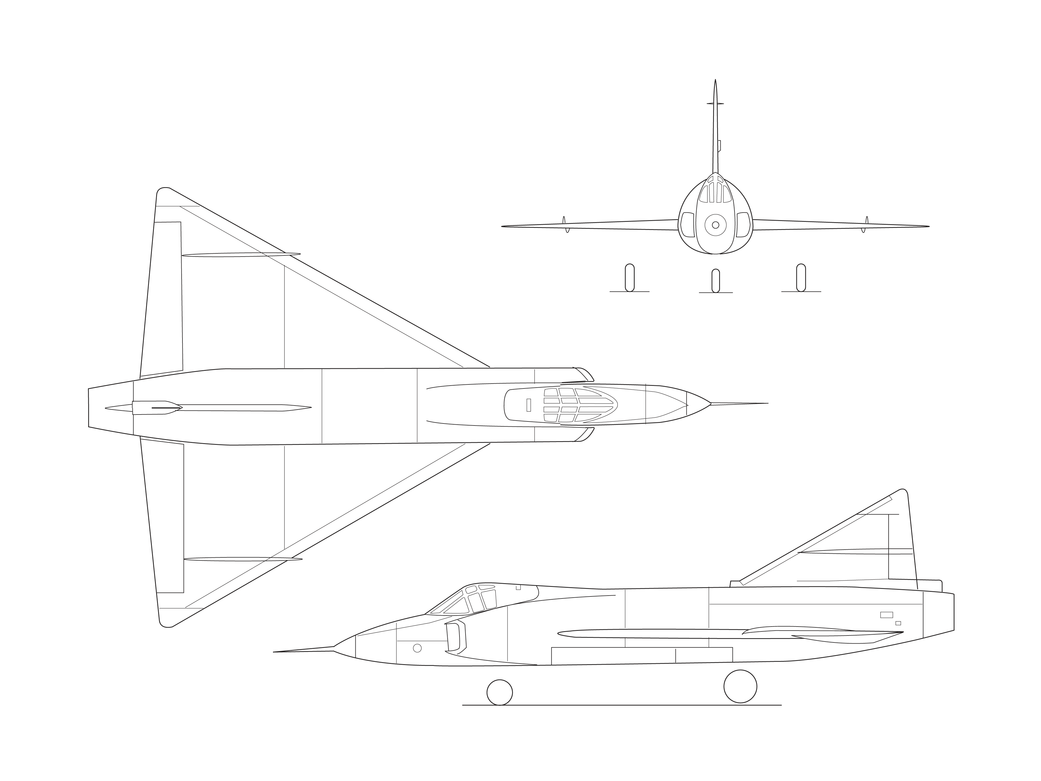EG-0107-01
The Convair YF-102 Delta Dagger interceptor was a scaled-up version of the delta-wing XF-92A. The NACA High-Speed Flight Station received the YF-102 in 1954 and flew it 104 times over 4 years. The YF-102, with a delta wing similar to the XF-92A, faced major redesign work due to pitch-up problems. Research data from wing fences used on the XF-92A was applied to the design of the YF-102. The nose inlet was changed to two side-mounted inlets and the canopy was redesigned. This aircraft with a Serial # 53-1785 and a NACA designation of #785 was retired to Edwards Air Force Base Salvage in 1958.
A modified F-102A aircraft designated JF-102A (J stands for special test status 1956 to 1966) arrived at the NACA High-Speed Flight Station, while testing continued on the first YF-102, in 1956. The most prominent new feature of the modified vehicle was a longer fuselage with a pinched or coke-bottle waist, the first application of the “area rule principle” developed at NACA by Richard Whitcomb (Langley Research Center). The wing had been changed to take on a conical wing camber (curvature) from research performed at the NACA Ames Aeronautical Laboratory. Before NASA ended the JF-102A program in 1959, tests pilots Jack McKay and Neil Armstrong flew a series of landing approaches under various lift-to-drag and power conditions in preparation for the ill-fated Dyna-Soar (X-20) program. The JF-102A made 48 flights for testing performance on a Delta-Wing starting in 1956 and retiring in 1959 to Davis-Monthan Air Force Base, in Arizona.





























